The Handpan, jewel of themusical innovation, was born in the workshops of PanArt in Switzerland, under the aegis of Felix Rohner and Sabina Shärer. Initially named HangThis term evoking "the hand" in Swiss German dialect, this musical instrument draws its essence from the ancestral traditions of the Ghatam.

With a history rooted in cultural and technological fusion, the handpan embodies a revolution in the world of percussionsOffering a range of unique sounds designed for relaxation and musical composition.
Also to read: Comment fonctionne un Handpan (ou Hang Drum) ?
1. The Indian roots of the Handpan
The Ghatam, also called Ghara, derives its etymology from its primary function: to be a "water pot". The Ghatam is indeed nothing more than a clay water pot. Used in a roundabout way since the 8th century, it inspired the invention of a metal Ghatam, which became the Handpan.
This dream of a percussion instrument made of metal and capable of producing different notes is that of Reto Weber who, in 1999, gave the idea to the company PanArt to create this brand new instrument.
The success was dazzling. The New-Age instrument, with its futuristic appearance, quickly integrated into its century, finding a passionate clientele. However, the momentum of the PanArt company would be short-lived.
Explore our handpans with Indian roots and discover an ancestral sound universe. Visit our collection from now on to find your sound soul.
2. After the euphoria of creation, the lawsuits
The Hang, launched by the company PanArt in 2000, was removed from store sales in 2005, as PanArt wanted to limit itself to direct sales, and only upon motivated request. To the point that the instruments are becoming rare and that demand far exceeds supply.
Musicians must queue to acquire one and travel to Bern to make the purchase, under the pretext of resale right from the company PanArt, which prohibits the sale for profit.
Nature abhors a vacuum, the Hang manufacturers, then becoming Hang drums, quickly multiplied. By its desire to control the entire industry, the company PanArt had created competing companies capable of meeting the rising demand.
Aiming at copyright laws, PanArt has engaged in all-out legal battles, trying to prohibit the manufacture of its instrument by other firms, both in the United States and in Europe, with important victories, as against the Dutch company Ayasa.
Navigate beyond controversies and find your ideal handpan in our diverse collection. Visit us to discover your next musical companion.
3. A new instrumental invoice
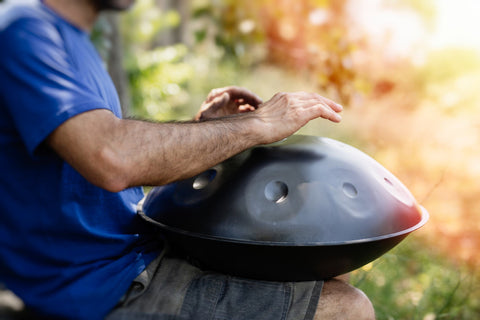
The emergence of new production workshops, nearly 300 worldwide, has given rise to a new instrumental quality. A multiplication of sounds has emerged. New musical associations have been born.
The legal actions, which have profoundly destabilized society Ayasa, summoned by the Dutch courts to cease its production, have raised protests among all the percussionists.
The very image of the PanArt company has been tarnished and, under the argument of the denaturation of their work, the question arose as to whether Felix Rohner and Sabina Shärer were not, on the contrary, seeking to impose a legal monopoly.
However, the Hand pan has indeed developed, and that nothing can stop the course of events. The Handpan has entered the large family of musical instruments, like the violin, the saxophone, or even the harp, and nothing will be able to deprive the musicians to own and play this magnificent instrument that is the Handpan.
Start your music too and buy your first handpan.
4. Timeline and evolution of the Handpan / Hang drum
Here is a summary table of the key moments and the evolution of the handpan from its creation to today, offering a perspective on its fascinating development:
| Year | Event | Description |
|---|---|---|
| 2000 | Beginning of the development of the Hang by PANArt | Felix Rohner and Sabina Shärer begin the experimentation. |
| 2001 | First public presentation of the Hang | The Hang is introduced, revolutionizing percussion. |
| 2007+ | Appearance of new manufacturers and diversification | The term 'Handpan' emerges to describe similar instruments. |
| 2010s | Global expansion and continuous innovation | The technological and artistic innovation enriches the available range. |
| 2020+ | Diversity of styles, materials, and tuning techniques | The handpan is now a global instrument with a dedicated community. |
|
Today (ZenaPan) |
Original handpan, superior quality handpan, handcrafted, more elaborate version of the hang drum | The high-quality handpan at the right price, expert advice |
Dive a little deeper into the fascinating history of the Handpan by acquiring your original instrument at Zenapan. Discover our selected range of Hang Drums that celebrate every step of their evolution. Visit our store now at clicking here !
What to remember
L'histoire du handpan, from its Swiss origins with PanArt to its global evolution, bears witness to the fascination exerted by this unique instrument. Through generations, the hang drum has managed to captivate with its enchanting sound and its potential for well-being. Whether you are a beginner musician or an expert, discovering and master the handpan promises a rewarding musical adventure, immersed in the depths harmoniques of this revolutionary percussion instrument.
FAQs
1. Who invented the handpan and when?
The handpan was invented by Felix Rohner and Sabina Shärer of PANArt in Switzerland, around the year 2000, marking the beginning of a new era for percussion instruments.
2. What is the difference between a handpan and a hang drum?
Initially, the hang drum was the name given to the first handpan created by PANArt. Today, "handpan" refers to the family of instruments inspired by the original Hang, with a variety of manufacturers and sounds.
3. How does the handpan produce its unique sounds?
The handpan produces its melodic sounds through the resonance of nitrided or stainless steel shaped into domes and cavities. Each note, carefully tuned, creates rich and enveloping harmonics.
4. Is the handpan easy to learn for beginners?
Yes, thanks to its intuitive range and design that encourages exploration, the handpan is accessible to beginners. However, mastering its nuances and full musical potential requires practice and dedication.
5. Where can one buy an original handpan?
Original handpans can be purchased directly from recognized manufacturers, in specialized handpan stores, or through online platforms. It is crucial to seek authenticity and quality for an optimal experience.

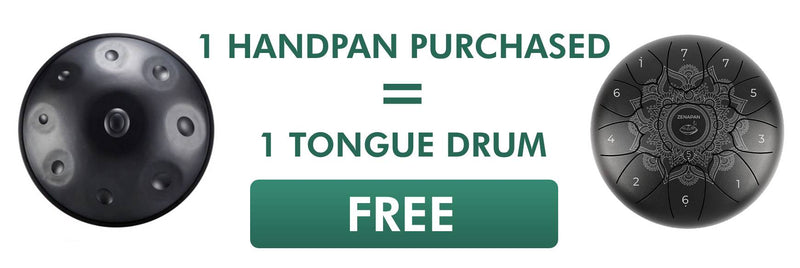




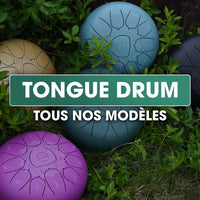


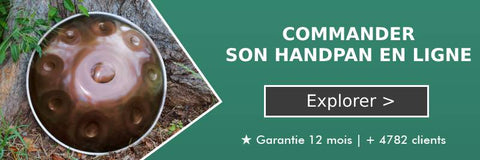


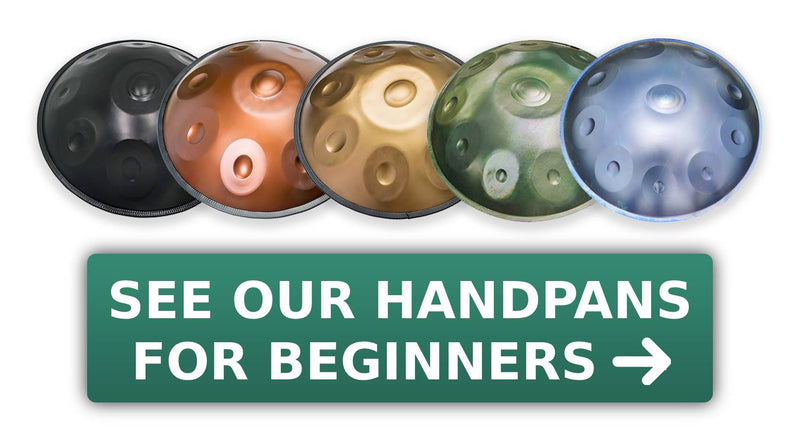
Gökhan gökce
Ich habe euch am 2 .September 1130 euro überwiesen,dann habt ihr meine ware am 10 September stoniert auf meinen wunsch ,hab ich nie verordnet,und seit dem keine hanpan bekommen,dauernd wird irgendwas vom service beantwortet ,es tut uns leid ,und jz habe ich soviel geld ausgegeben ,und habe nichts bekommen danke zena pan
Ezzel
Merci de vous reporter à la création originelle métallique en Jamaïque au milieu des années 1960.
Les jamaïcains puis ceux des Caraïbes transformaient la partie basse d’un fût métallique en pratiquant des concaves en respectant les notes du solfège